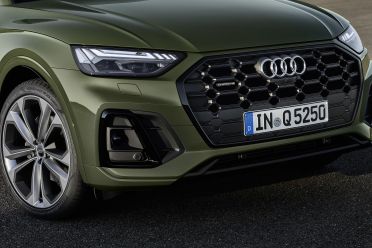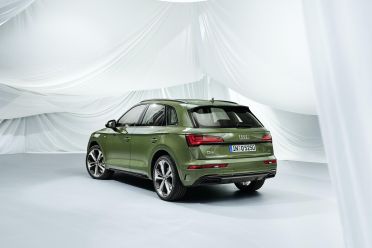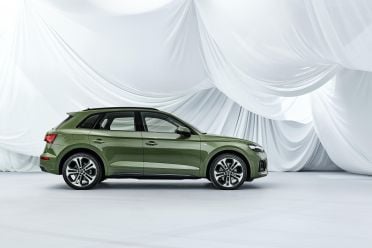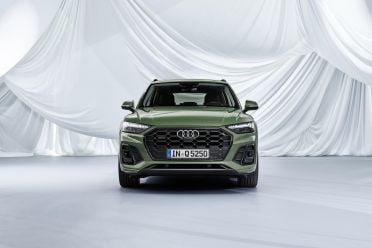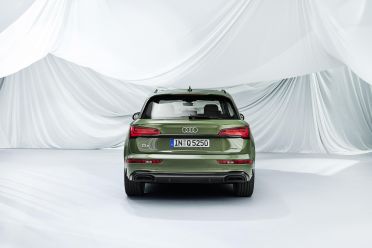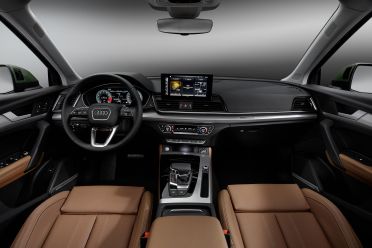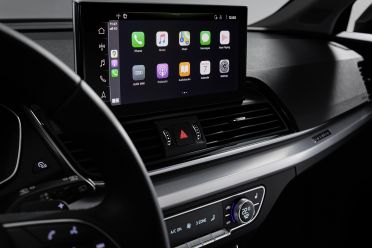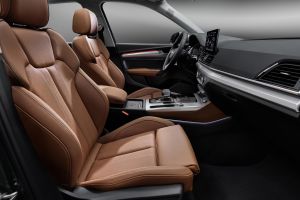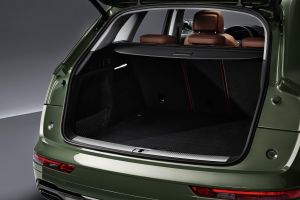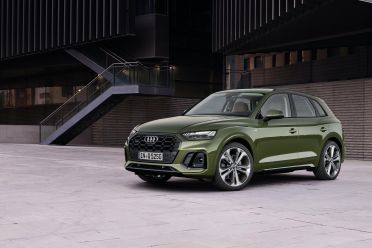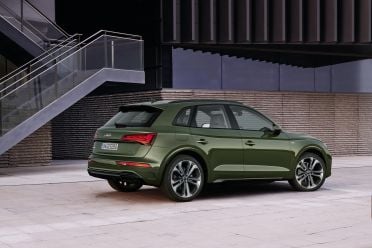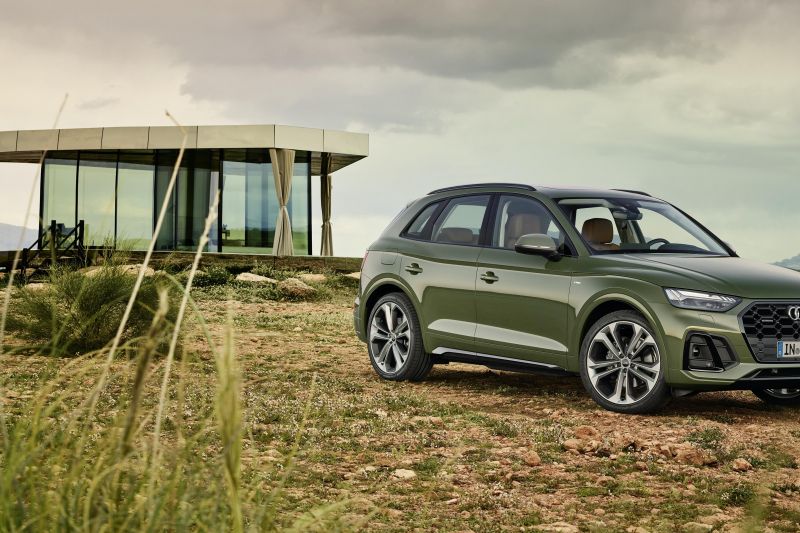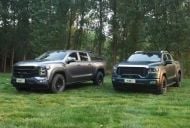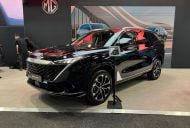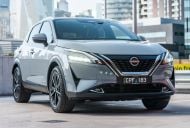Audi’s best-selling model in Australia, the Q5, has gone under the knife. The mid-cycle enhancement will arrive in the first half of next year, following a European launch later this year.
The turbo-diesel engines now feature mild-hybrid technology, while the SQ5 diesel is returning to Australia after a brief absence. That’ll make the SQ5 petrol, introduced last year, a one-and-done.
The Q5’s exterior has been treated to a makeover, with a revised Singleframe grille that’s detached from the bonnet, plus new LED daytime running lights and restyled air intakes and rocker panels.
Most notably, there are trick new tail lights with digital organic light-emitting diode (OLED) technology, a world first for a production car.
When purchasing your Q5, you’ll be able to choose one of three rear lighting signatures, each with a unique movement when you lock or unlock the car.
The lighting signatures also change when you flick the Q5 to Dynamic mode, while all of the OLED segments light up when a pedestrian or cyclist approaches a stationary Q5 from the rear.
Though the OLED signature you select at purchase is locked in, Audi says down the line you’ll be able to change this post-purchase.
The brake lights remain conventional LED units. The new tail lights are now linked with a chrome bar while, up front, LED headlights are standard with matrix LED headlights optional. New exterior colours include District Green and Ultra Blue.
The Q5 40 TDI’s 2.0-litre turbo-diesel four-cylinder engine now features a belt-driven starter/generator (BSG) that supplies the 12-volt vehicle electrical system. The BSG will harness braking energy and store it in a small, lithium-ion battery, and the system allows the Q5 to coast with its engine off.
Audi claims the revised powertrain yields an improvement in fuel economy of 0.3L/100km. Currently, the 40 TDI achieves a combined 5.4L/100km on the ADR combined cycle.
Power is up slightly to 150kW (up 10kW), while torque is unchanged at 400Nm. Audi also claims an improved 0-100km/h time of 7.6 seconds, 0.3 seconds quicker.
The 50 TDI’s 3.0-litre turbo-diesel V6 receives a 48-volt mild hybrid system, though its outputs remain unchanged at 210kW of power and 620Nm of torque.
The 45 TFSI’s 2.0-litre turbocharged four-cylinder is unchanged and continues to produce 183kW of power and 370Nm of torque.
All four-cylinder models will continue to use a seven-speed dual-clutch automatic while six-cylinder models use an eight-speed torque-converter automatic.
The Q5 uses Audi’s latest MIB3 infotainment system, which is said to have ten times the computing power of the old MIB2 system.
It features a 10.1-inch screen that can only be controlled via touch – the rotary dial has been removed, replaced with a storage cubby. The 12.3-inch Virtual Cockpit Plus remains.
You can choose three different windows to display on the main screen, or revert to the classic view. The new system also now includes Amazon Alexa integration.
You can save preferred settings for functions like the air-conditioning and radio in six individual user profiles, which are stored in the cloud and can be transferred to other vehicles. And if you didn’t option your Q5 with, for example, the Audi smartphone interface, you have the option to add this post-purchase via the myAudi app and it’ll be added over-the-air.
Q5 models in markets such as the US, will receive a traffic light recognition function that tells the driver how much longer their light will be red for. Unfortunately, Audi Australia doesn’t anticipate this technology being available here anytime soon.
The navigation system features Google Earth satellite imagery and can also tell you where the nearest public bathrooms are and even show you the probability of street parking in a given area.
Audi has yet to confirm the local model range and pricing, though the Australian division says the success of the current model should mean the revised range will echo that of the current model.
Four models will be available for Audi Australia to choose from: the 40 and 50 TDI and 45 TFSI, plus the SQ5 diesel. Except Audi to offer all four of these plus the company’s existing range of options, including 20- and 21-inch alloy wheels and adaptive air suspension.
Our market will miss out on other Q5 models, including the plug-in hybrid Q5 55 TFSIe.
Production begins at the San José Chiapa plant in Mexico this winter, with exports to begin in spring. All Q5s – excluding the Chinese-market, long-wheelbase Q5L – are manufactured there.





